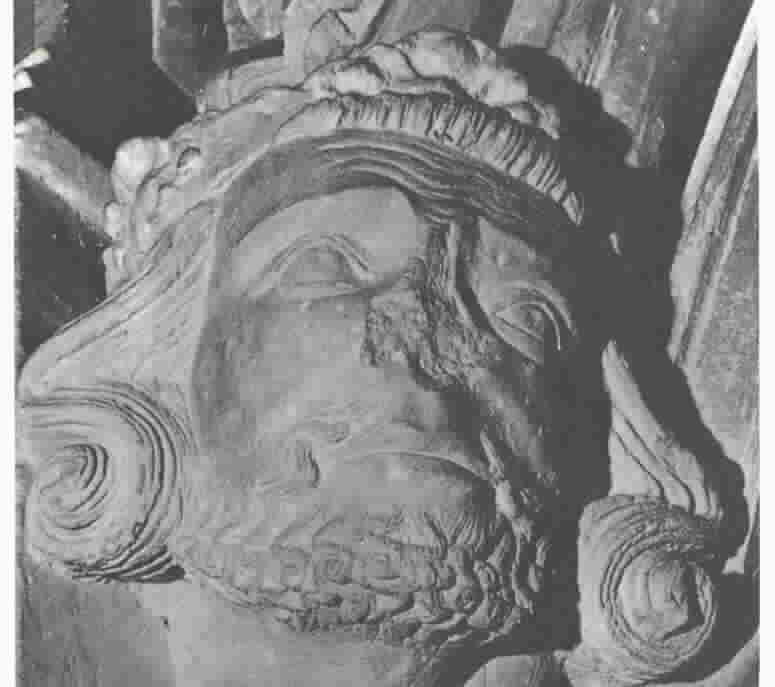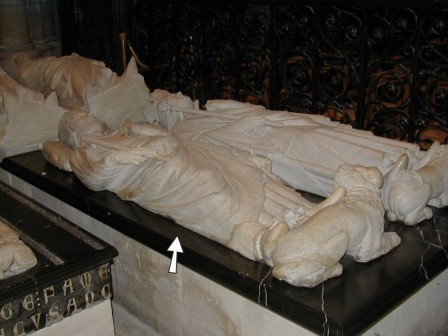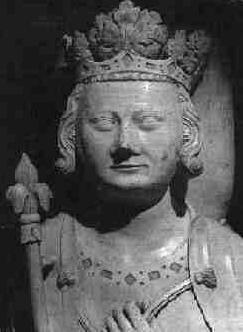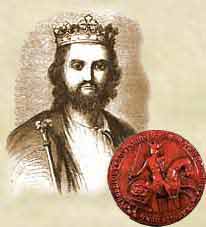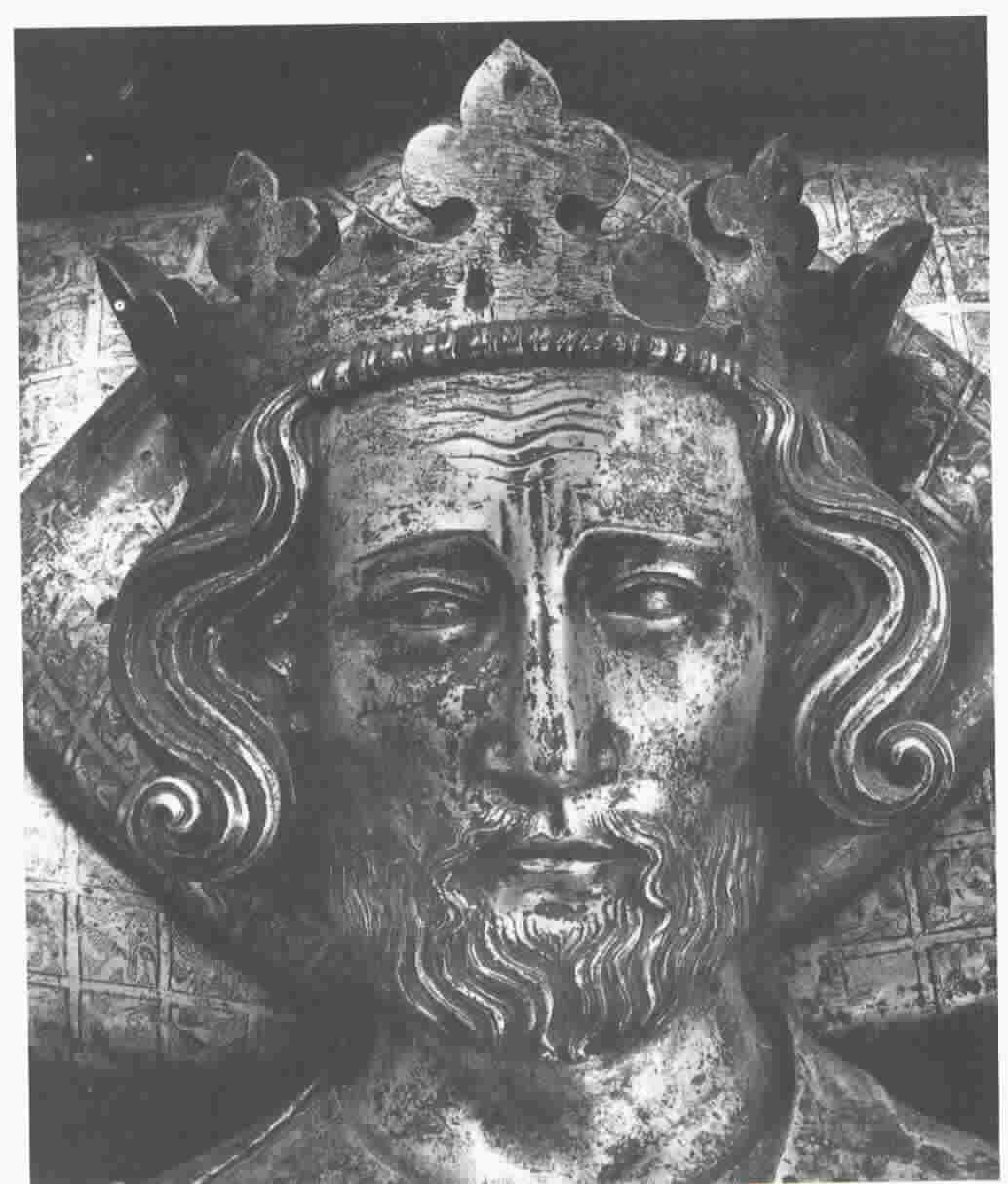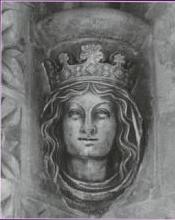of France Family - Ourfolk
Marguerite of France (Plantagenet) 1279 - 14 FEB 1317
Marguerite was born on 1279 in Paris, France and died on 14 FEB 1317 in Malborough Castle and was buried in Grey Friars, Church, London, England .
She was the daughter of King Philip Iii of France (1 MAY 1245 - 5 OCT 1285) and Mary of Brabant (of France) (D: 1321).
Marguerite was married to King Edward I Plantagenet .
King Edward was born on 17 JUN 1239 in Westminster, London, England and died on 8 JUL 1307 (age: 68) in Burgh-On-The-Sands, Cumberland, England .
He was the son of King Henry Iii Plantagenet (10 OCT 1206 - 16 NOV 1272) and Eleanor Berenger de Provence (Plantagenet) (ABT 1217 - 24 JUN 1291).
View Family Chart
- - -
| Parents | Grand Parents | |||||||||||||||||||||||||||||||||||||||||||||||||||||||||||||||||||||||||||||||||||||||||||||||||||
| ⌈ King Louis Ix of France (1214 - 25 AUG 1270) | ||||||||||||||||||||||||||||||||||||||||||||||||||||||||||||||||||||||||||||||||||||||||||||||||||||
| ⌈ King Philip Iii of France (1 MAY 1245 - 5 OCT 1285) | ||||||||||||||||||||||||||||||||||||||||||||||||||||||||||||||||||||||||||||||||||||||||||||||||||||
| ⌊ Margaret de Province (of France) (B: ABT 1220) | ||||||||||||||||||||||||||||||||||||||||||||||||||||||||||||||||||||||||||||||||||||||||||||||||||||
| Marguerite of France (Plantagenet) | ||||||||||||||||||||||||||||||||||||||||||||||||||||||||||||||||||||||||||||||||||||||||||||||||||||
| ⌈ King Henry Iii Plantagenet (10 OCT 1206 - 16 NOV 1272) | ||||||||||||||||||||||||||||||||||||||||||||||||||||||||||||||||||||||||||||||||||||||||||||||||||||
| ⌊ Mary of Brabant (of France) (D: 1321) | ||||||||||||||||||||||||||||||||||||||||||||||||||||||||||||||||||||||||||||||||||||||||||||||||||||
| ⌊ Eleanor Berenger de Provence (Plantagenet) (ABT 1217 - 24 JUN 1291) | ||||||||||||||||||||||||||||||||||||||||||||||||||||||||||||||||||||||||||||||||||||||||||||||||||||
- King of England (1272-1307) completed the conquest of Wales and temporarily subdued Scotland.
In 1254 he was made duke of Gascony.
In contrast to his father, Edward showed masterfulness in the disputes with the English barons following the governmental reforms instituted by the Provisions of Oxford (1258). He supported Simon de MONTFORT in 1259 but later changed sides.
He fought for the king at the Battle of Lewes (1264) and himself defeated Montfort decisively at Evesham (1265), restoring royal power.
In 1271-72 he was on crusade at Acre. During the years from 1272, when Edward succeeded his father, to 1290 striking achievements occurred.
Edward conquered the Welsh principality of Llywelyn ap Gruffydd in devastating campaigns in 1277 and 1282-83 and built massive castles to keep it secure. In England he held regular parliaments. A program of legislation strengthened royal control over the court system and reformed the tangled feudal land law.
After 1294 wars in Scotland and France dominated Edward's reign. The death (1290) of Margaret, Maid of Norway, heiress to the Scottish crown, allowed Edward as suzerain to choose a successor, John de Baliol, and then to claim direct rule over Scotland, which he subdued in 1296. In France the conflict concerned the French king's overlordship over Edward's duchy of Gascony.
In 1297, Edward attacked France to assert his rights, but the expedition was cut short by the rebellion in Scotland of Sir William WALLACE (from the movie 'Braveheart').
At the same time the English nobles rebelled, forcing Edward to grant Parliament control over taxes. By a treaty (1303) with PHILIP IV of France, Edward retained Gascony. He failed, however, to quell the risings of Wallace and Robert the Bruce (later ROBERT I), and Scotland remained only half- conquered at his death. He was succeeded by his son Edward II.
Edward I (ruled 1272-1307) was one of England's greatest kings. He was a handsome man, with fair hair and ruddy cheeks, and so tall that he was nicknamed Longshanks. He delighted in tournaments and hunting, but he was also practical and hardworking. For seven years before he came to the throne, he was the real ruler for his weak father, Henry III. He was in the Holy Land involved in the crusades when his father died, but there was no question that he would take the throne.
Edward has been called the 'English Justinian' because, like the Roman emperor Justinian, he organized the laws. His laws were not restatements of existing customs but statutes in the modern sense. Many of them, particularly the land laws, had a long-lasting influence. A statute of 1285 limited church courts to strictly church matters--a change that Edward's great-grandfather, Henry II, had been unable to make because of the murder of Thomas a Becket. Edward also stopped paying a feudal tribute to the pope.
Parliament grew in strength during Edward's reign because he continued the policy of Simon de Montfort in summoning to it representatives of the towns and lesser knights. His parliament of 1295 is known as the Model Parliament. In 1297 he reaffirmed the Magna Carta in the famous confirmation of the charters. All of Edward's moves were not fair and admirable ones, however; he forced Jews out of England in 1290.
Soon after coming to the throne, Edward conquered Wales and gave to his infant son, Edward, the title prince of Wales. Until 1289 the care of his French possessions, principally Aquitaine, in Southern France, absorbed much of his attention. For the rest of his life, his main concern was Scotland.
Edward I was a prolific castle builder.
He built an 'iron ring' of castles surrounding the
coastal fringes of Snowdonia,
eventually stretching from Flint
around to Aberystwyth.
Completed Flint Castle in 1284.
Completed construction of Aberystwyth Castle in 1289. The c astle was attacked by the Welsh in 1282, largely burned and briefly captured.
He started Harlich Castle in 1283. Caernarfon Castle was begun the same year.
It was during his second campaign in Wales that King Edward gained
control of the Conwy valley in March 1283. He began work on the new
fortress, Conway Castle almost immediately.
In 1295 work was begun on
the last and largest of the
castles to be built by King
Edward I in Wales Beaumaris Castle. Raised
on an entirely new site,
without earlier buildings to
fetter its designer's creative
genius, it is possibly the
most sophisticated example
of medieval military
architecture in Britain.
He conquered the country in 1296; but in 1297 all Scotland rose in revolt against him under the popular leader, William Wallace. Edward defeated Wallace at Falkirk the next year, but the Scots still resisted. Near the end of Edward's reign Scotland found a new leader in Robert Bruce. In 1307 King Edward, then 70 years old, led an army toward Scotland but died before he reached the border.
In 1254 he was made duke of Gascony.
In contrast to his father, Edward showed masterfulness in the disputes with the English barons following the governmental reforms instituted by the Provisions of Oxford (1258). He supported Simon de MONTFORT in 1259 but later changed sides.
He fought for the king at the Battle of Lewes (1264) and himself defeated Montfort decisively at Evesham (1265), restoring royal power.
In 1271-72 he was on crusade at Acre. During the years from 1272, when Edward succeeded his father, to 1290 striking achievements occurred.
Edward conquered the Welsh principality of Llywelyn ap Gruffydd in devastating campaigns in 1277 and 1282-83 and built massive castles to keep it secure. In England he held regular parliaments. A program of legislation strengthened royal control over the court system and reformed the tangled feudal land law.
After 1294 wars in Scotland and France dominated Edward's reign. The death (1290) of Margaret, Maid of Norway, heiress to the Scottish crown, allowed Edward as suzerain to choose a successor, John de Baliol, and then to claim direct rule over Scotland, which he subdued in 1296. In France the conflict concerned the French king's overlordship over Edward's duchy of Gascony.
In 1297, Edward attacked France to assert his rights, but the expedition was cut short by the rebellion in Scotland of Sir William WALLACE (from the movie 'Braveheart').
At the same time the English nobles rebelled, forcing Edward to grant Parliament control over taxes. By a treaty (1303) with PHILIP IV of France, Edward retained Gascony. He failed, however, to quell the risings of Wallace and Robert the Bruce (later ROBERT I), and Scotland remained only half- conquered at his death. He was succeeded by his son Edward II.
Edward I (ruled 1272-1307) was one of England's greatest kings. He was a handsome man, with fair hair and ruddy cheeks, and so tall that he was nicknamed Longshanks. He delighted in tournaments and hunting, but he was also practical and hardworking. For seven years before he came to the throne, he was the real ruler for his weak father, Henry III. He was in the Holy Land involved in the crusades when his father died, but there was no question that he would take the throne.
Edward has been called the 'English Justinian' because, like the Roman emperor Justinian, he organized the laws. His laws were not restatements of existing customs but statutes in the modern sense. Many of them, particularly the land laws, had a long-lasting influence. A statute of 1285 limited church courts to strictly church matters--a change that Edward's great-grandfather, Henry II, had been unable to make because of the murder of Thomas a Becket. Edward also stopped paying a feudal tribute to the pope.
Parliament grew in strength during Edward's reign because he continued the policy of Simon de Montfort in summoning to it representatives of the towns and lesser knights. His parliament of 1295 is known as the Model Parliament. In 1297 he reaffirmed the Magna Carta in the famous confirmation of the charters. All of Edward's moves were not fair and admirable ones, however; he forced Jews out of England in 1290.
Soon after coming to the throne, Edward conquered Wales and gave to his infant son, Edward, the title prince of Wales. Until 1289 the care of his French possessions, principally Aquitaine, in Southern France, absorbed much of his attention. For the rest of his life, his main concern was Scotland.
Edward I was a prolific castle builder.
He built an 'iron ring' of castles surrounding the
coastal fringes of Snowdonia,
eventually stretching from Flint
around to Aberystwyth.
Completed Flint Castle in 1284.
Completed construction of Aberystwyth Castle in 1289. The c astle was attacked by the Welsh in 1282, largely burned and briefly captured.
He started Harlich Castle in 1283. Caernarfon Castle was begun the same year.
It was during his second campaign in Wales that King Edward gained
control of the Conwy valley in March 1283. He began work on the new
fortress, Conway Castle almost immediately.
In 1295 work was begun on
the last and largest of the
castles to be built by King
Edward I in Wales Beaumaris Castle. Raised
on an entirely new site,
without earlier buildings to
fetter its designer's creative
genius, it is possibly the
most sophisticated example
of medieval military
architecture in Britain.
He conquered the country in 1296; but in 1297 all Scotland rose in revolt against him under the popular leader, William Wallace. Edward defeated Wallace at Falkirk the next year, but the Scots still resisted. Near the end of Edward's reign Scotland found a new leader in Robert Bruce. In 1307 King Edward, then 70 years old, led an army toward Scotland but died before he reached the border.
Last change (on this page): 15 OCT 2018

